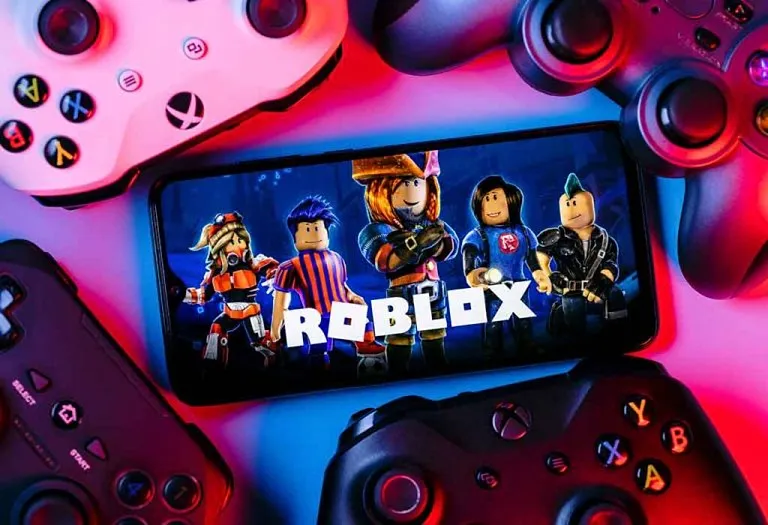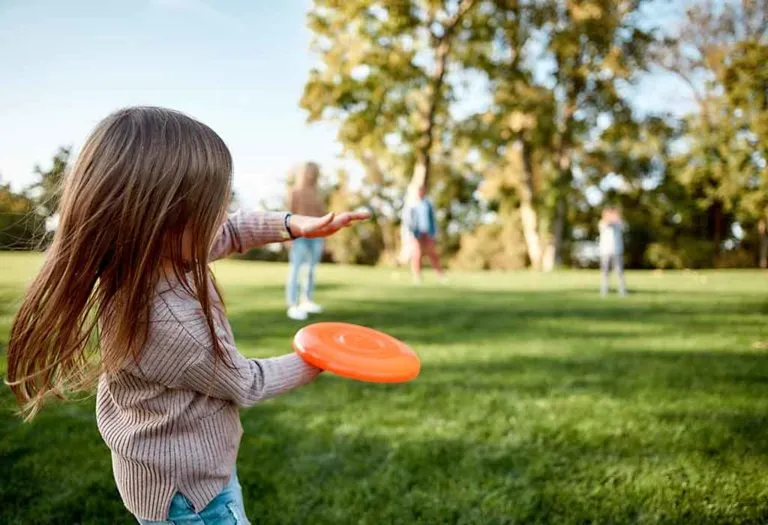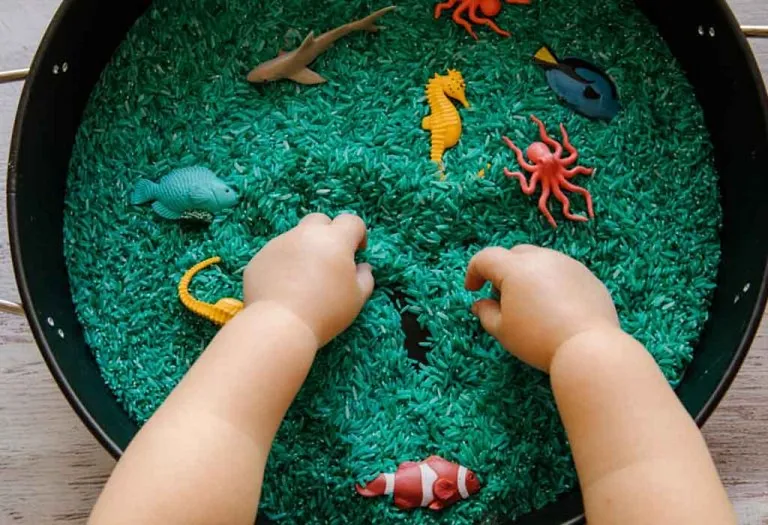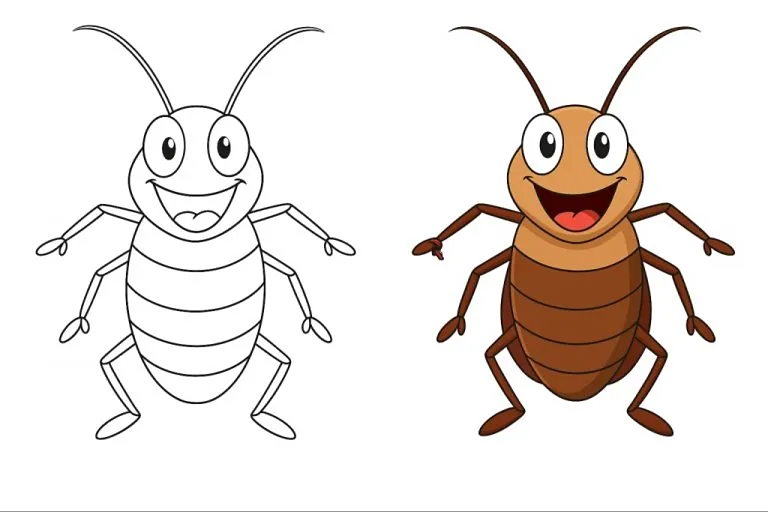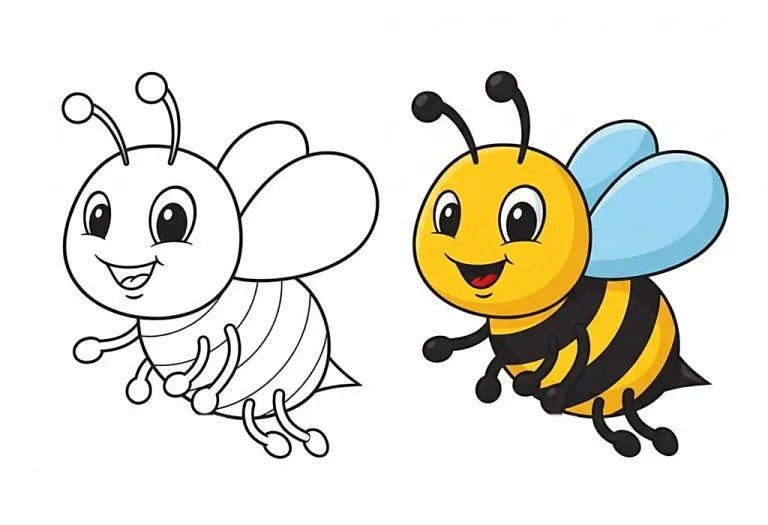Top 20 Ball Games for Kids
Be it plastic balls, tennis balls, or softballs, kids do get attached to them rather quickly and tend to make them their best friends. Having a ball to play around in the garden is a great physical activity as well, helping kids stay active and healthy. However, all games don’t have to simply be about catching a ball and throwing it back. There are many creative and engaging ball games for kids that can make a simple activity absolutely enthralling, turning an ordinary day into an exciting adventure. From obstacle challenges to team-based games, the options are endless. Check out these fun ball games to play with kids.
What Are the Benefits of Ball Games for Kids?
Ball games are a fantastic way to combine fun and physical activity for children. Let’s explore the key benefits of playing ball games for kids.
1. Enhances Physical Fitness
Playing ball games keeps kids physically active, helping them strengthen their muscles and improve overall fitness. Running, jumping, and throwing increase cardiovascular endurance, build stamina, and enhance flexibility. Over time, this regular physical engagement supports healthy growth and minimizes the risk of childhood obesity or related health issues.
2. Develops Motor Skills
Games with balls for preschoolers involve various movements, such as gripping, rolling, throwing, catching, and kicking, which refine both fine and gross motor skills. For instance, aiming for a target or catching a ball in mid-air requires hand-eye coordination and quick reflexes. These skills are essential for other activities, such as writing, tying shoelaces, or participating in sports.
3. Boosts Social Skills
Many ball games are group activities that encourage children to interact with peers, learn teamwork, and practice sportsmanship. By taking turns, sharing responsibilities, and supporting teammates, kids improve their communication and cooperation skills. These experiences help build relationships and prepare them to navigate social situations in the future.
4. Encourages Problem-Solving
Certain ball games, like dodgeball or basketball, require strategic planning and quick thinking. Children need to anticipate their opponent’s moves, decide on their next action, and adjust their strategies as the game unfolds. This sharpens their problem-solving abilities, improves decision-making skills, and boosts cognitive flexibility.
5. Promotes Mental Well-Being
Active play has a significant positive impact on mental health. Ball games allow kids to release pent-up energy and reduce stress through physical movement. Additionally, these activities trigger the release of endorphins, the “feel-good” hormones, which improve mood, increase confidence, and enhance emotional resilience. Playing with others also creates happy memories and fosters a sense of belonging.
Best Ball Games for Children
Some of the best ball games for kids are listed below.
Indoor Ball Games
Indoor ball games can be a great option when the weather doesn’t permit kids to go out.
1. Guide the Ball Through a Maze
Benefits
- Enhances hand-eye coordination.
- Improves focus and patience.
- Encourages friendly competition.
How to Play
- Arrange books or boxes to form a maze in your hall.
- Give each child a ping pong ball and a straw.
- Mark designs on each ball for easy identification.
- Kids blow on their balls using the straw to guide them through the maze.
- The one who completes the maze in the shortest time wins.

2. Pass the Balls Through the Tunnels
Benefits
- Develops precision and aim.
- Improves spatial awareness.
- Promotes teamwork when played in groups.
How to Play
- Cut small holes on one side of old boxes to create tunnels.
- Place the boxes upside down at the end of a hallway.
- Kids roll tennis balls towards the boxes, aiming to pass them through the holes.
- The child who rolls the most balls through the tunnels wins.

3. Ice Hockey Using Ping Pong Balls
Benefits
- Improves motor skills.
- Enhances breath control (if using straws).
- Promotes competitive spirit.
How to Play
- Tape cups to either side of a table as goalposts.
- Use straws as hockey sticks and a ping pong ball as the puck.
- Kids push the ball with the straws, aiming to score in the opponent’s goal.
- The one who scores the most goals wins.
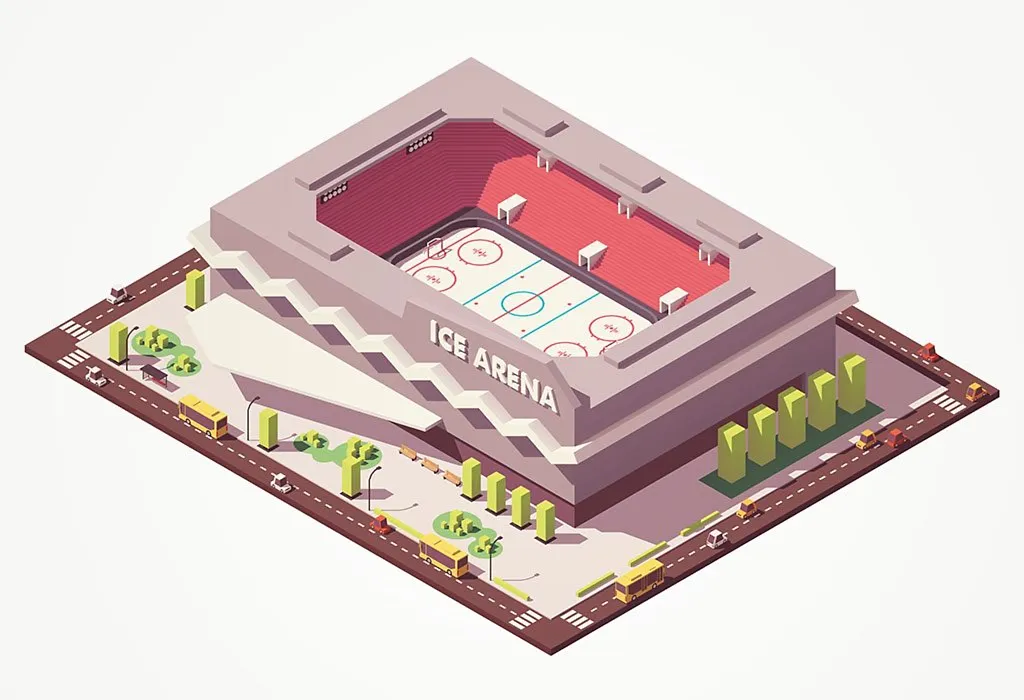
4. Sticky Spider Ball Using Old Newspapers
Benefits
- Boosts hand-eye coordination.
- Encourages creative problem-solving.
- Provides a fun recycling activity.
How to Play
- Wrap duct tape (sticky side out) around a cardboard piece in a criss-cross pattern.
- Crumple old newspapers into small balls.
- Kids stand at a distance and throw the balls at the sticky board.
- The one with the most balls stuck to the board wins.

5. Reverse Bowling Using Used Cold Drink Bottles
Benefits
- Teaches control and precision.
- Promotes a unique take on a classic game.
- Encourages critical thinking.
How to Play
- Arrange empty cold drink bottles in a staggered formation.
- Roll a medium-sized ball aiming to knock down the fewest bottles.
- The player who drops the least bottles wins.

6. Target the Cups
Benefits
- Develops focus and aim.
- Encourages patience and precision.
- Provides fun and friendly competition.
How to Play
- Arrange plastic cups or paper cups in a pyramid on a table or flat surface.
- Mark a throwing line a few feet away from the setup.
- Each player takes turns throwing a soft ball or rolled-up socks to knock down the cups.
- Award points based on how many cups are knocked over in one turn.
- Continue for several rounds; the player with the highest score wins.
7. Basket Ball Toss
Benefits
- Enhances aiming and throwing skills.
- Boosts hand-eye coordination.
- Encourages friendly competition.
How to Play
- Set up buckets or baskets at different distances.
- Assign each basket a score based on its difficulty level.
- Kids toss balls into the baskets to earn points.
- The player with the highest score wins.
8. Floor Soccer
Benefits
- Improves leg strength and agility.
- Encourages teamwork and strategic thinking.
- Provides a fun outlet for energy.
How to Play
- Use a soft ball and designate goals on either side of the room.
- Kids play soccer while crawling or sitting on the floor.
- The team that scores the most goals wins.
9. Rolling Target Game
Benefits
- Builds focus and concentration.
- Teaches kids about angles and rolling force.
- Encourages precision.
How to Play
- Place a target, like a circle drawn on paper, on the floor.
- Kids take turns rolling the ball to land it within the target area.
- The closer the ball stops to the center, the higher the score.
- The player with the highest total score wins.
10. Balloon Target Smash
Benefits
- Strengthens gross motor skills.
- Improves hand-eye coordination.
- Offers a fun and energetic activity.
How to Play
- Blow up balloons and tape them to a wall at varying heights.
- Provide kids with soft balls or beanbags.
- Kids aim and throw the balls to pop the balloons or hit the targets.
- The child who hits the most targets wins.
Outdoor Ball Games
There is nothing like playing ball with kids when the day is bright and beautiful outside.
1. Dodge the Ball Without Moving Your Feet
Benefits
- Encourages teamwork and coordination.
- Improves reflexes and agility.
- Promotes strategic thinking and planning.
How to Play
- Form a circle with all players and assign numbers to everyone.
- Place a ball in the center of the circle.
- One player calls out a number; the person with that number must grab the ball while the others run away.
- Once the player with the ball shouts “STOP,” everyone must freeze.
- The player with the ball tries to hit someone by throwing the ball, taking a maximum of two steps.
- The targeted player can dodge but must keep their feet stationary.

2. Bag the Ball in the Basket
Benefits
- Enhances hand-eye coordination.
- Encourages teamwork and communication.
- Improves precision and aim.
How to Play
- Divide players into two teams.
- Assign one player from each team as the goalkeeper.
- Provide the goalkeeper with a plastic bag to act as the basket.
- Players from each team try to throw balls into their goalkeeper’s bag.
- The goalkeeper can move the bag but must keep their feet stationary.
- The team with the most balls in the bag wins.
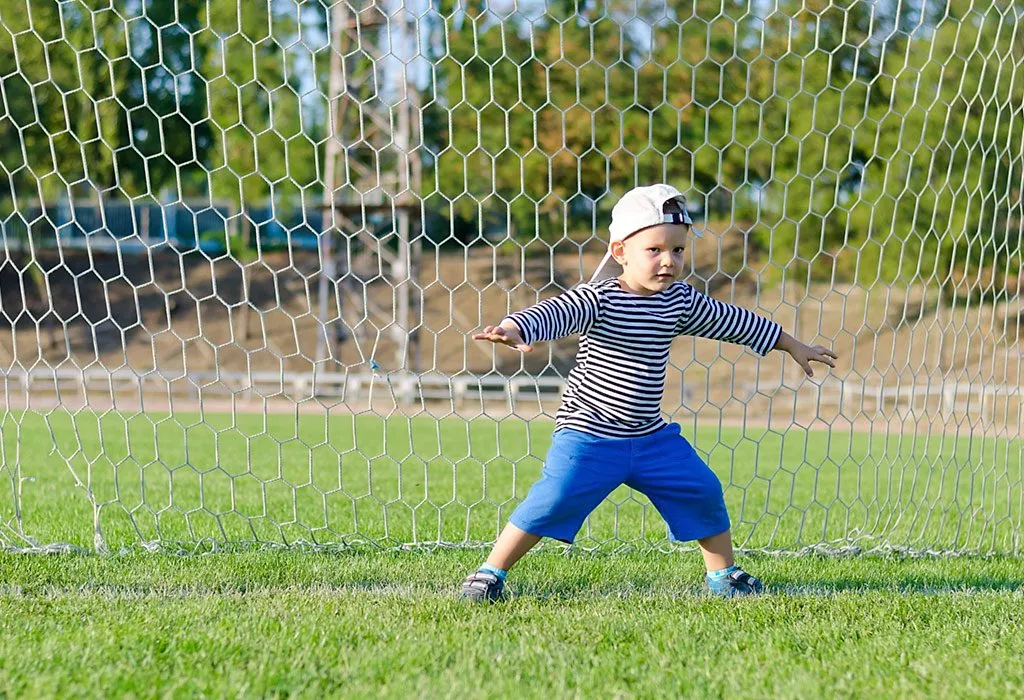
3. Hop, Skip, And Jump While Balling Around
Benefits
- Improves balance and coordination.
- Enhances listening and quick response skills.
- Develops motor skills and endurance.
How to Play
- Assign one player as the goalie who will roll the ball towards the other player(s).
- The player moving towards the goal must listen for commands like “hop,” “skip,” or “jump.”
- The player must perform the commanded action while continuing towards the goal.
- Players can switch roles for variation and added fun.
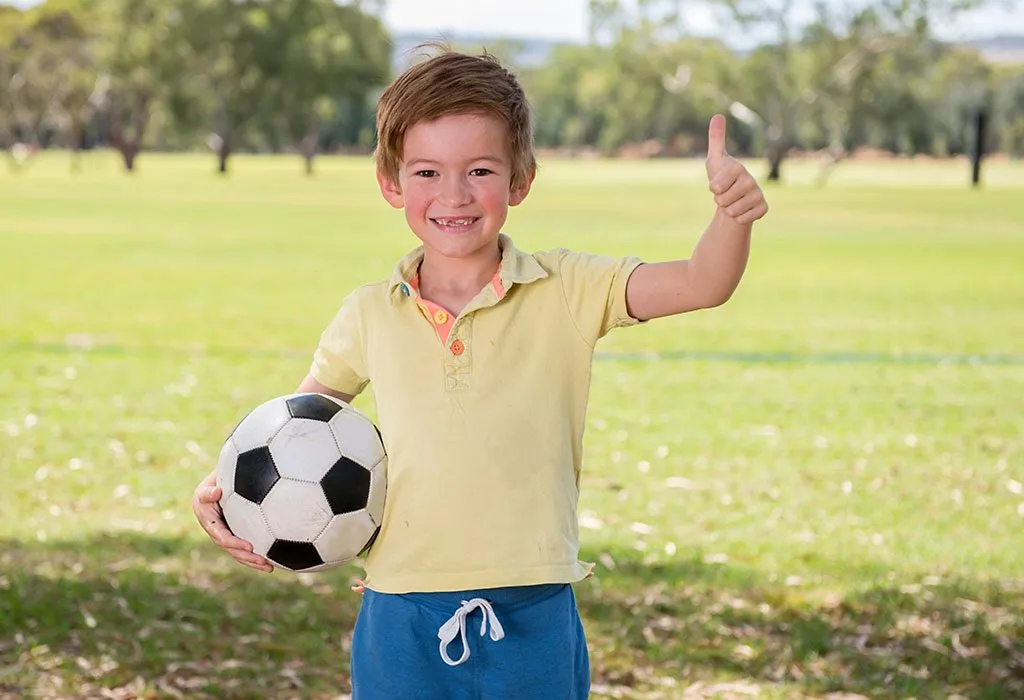
4. Throw It, Catch It, Say It
Benefits
- Stimulates cognitive skills and creativity.
- Encourages quick thinking.
- Promotes active engagement and fun learning.
How to Play
- Form a circle with all players.
- One player throws the ball while shouting a category (e.g., “colour” or “country”).
- The receiving player must name something relevant to the category (e.g., “red” for “colour”) before throwing the ball to the next player.
- The game continues with players coming up with new categories and responses.

5. Airborne Ball
Benefits
- Develops balancing and control skills.
- Enhances focus and concentration.
- Promotes group collaboration and dexterity.
How to Play
- Start with a single player balancing a ball on one foot and bouncing it repeatedly.
- Introduce alternate foot usage to increase difficulty.
- For group play, form a circle and pass the ball around while keeping it airborne.
- Add variations like bouncing the ball using the head or alternating between head and feet.
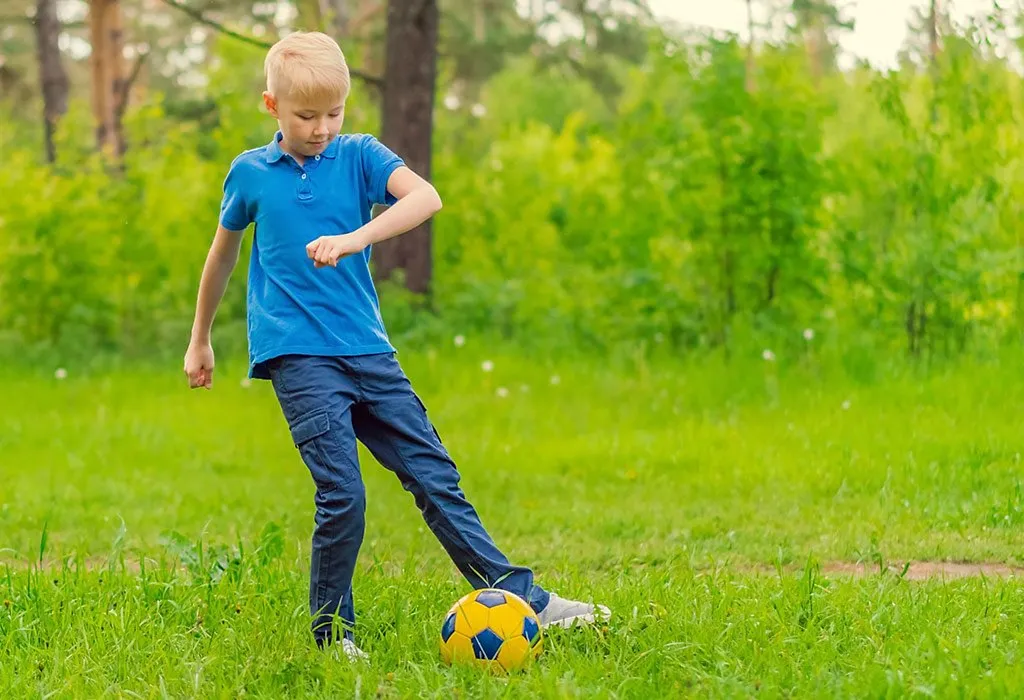
6. Target Throw
Benefits
- Improves hand-eye coordination.
- Enhances focus and concentration.
- Encourages healthy competition.
How to Play
- Set up a target, such as a hula hoop or a marked area on a wall.
- Players take turns throwing a ball to hit the target from a set distance.
- Assign points based on the accuracy of the throws.
- The player with the highest points after a set number of turns wins.
7. Relay Ball Pass
Benefits
- Promotes teamwork and communication.
- Boosts physical fitness.
- Improves speed and agility.
How to Play
- Divide players into teams and line them up in rows.
- Place a ball at the starting point.
- Each player runs to a marked spot while passing the ball back and forth to a teammate.
- The first team to complete the relay wins.
8. Shadow Ball Chase
Benefits
- Encourages strategic thinking.
- Develops speed and agility.
- Improves coordination and quick reflexes.
How to Play
- Designate one player as “the shadow” and give them the ball.
- Other players try to tag the shadow while avoiding being tagged themselves.
- The shadow must dribble the ball and keep it under control.
- If tagged, the shadow passes the ball to the tagger, and the game continues.
9. Obstacle Course Dribble
Benefits
- Enhances dribbling and control skills.
- Builds endurance and strength.
- Promotes problem-solving.
How to Play
- Set up an obstacle course with cones, chairs, or other objects.
- Players take turns dribbling the ball through the course.
- The one who completes the course in the shortest time without touching any obstacles wins.
10. Circle Pass Knockout
Benefits
- Improves reflexes and quick thinking.
- Encourages teamwork and strategic passing.
- Boosts focus and agility.
How to Play
- Form a large circle with all players.
- Choose one player to stand in the middle as the “knockout defender.”
- Players in the circle must pass the ball quickly to each other while avoiding the defender.
- The defender tries to intercept the ball or knock it out of the circle.
- If the defender intercepts the ball, the player who last passed it becomes the new defender.
- Continue for a set time or until everyone has had a turn in the middle.
FAQs
1. How can ball games improve a child’s attention span?
Ball games require focus, concentration, and the ability to stay engaged for extended periods. As children participate in these activities, they practice sustained attention and improve their ability to stay focused, which translates into better performance in school and other areas of life.
2. What is the best age to start introducing ball games to kids?
Children can start engaging in simple ball activities as early as 18 months to 2 years old. At this stage, they can begin with soft balls or beach balls to practice rolling or throwing. As they grow, more complex ball games involving teamwork, coordination, and strategic thinking can be introduced.
3. Do ball games help with a child’s balance and posture?
Yes, ball games for toddlers are excellent for improving balance and posture. Activities like balancing a ball on the head, hopping while dribbling, or kicking and chasing the ball all involve core muscles and help develop better body awareness. This strengthens posture and balance, which are vital for physical development.
All these fun ball games for kids are a great chance to undertake a lot of physical activity. Contrary to popular opinion, ball games can be enjoyed within the confines of the home as well if it has been a rainy day outside. With a little bit of creativity, every game can be quite fun and be making a variety of rules can add a new flavour to a typical age-old game. Kids can work together to form their own rules and come up with new game variations of their own. Later on, they can start their championships, too.
References/Resources:
1. Playing with balls; Department for Education South Australia; https://www.education.sa.gov.au/parents-and-families/curriculum-and-learning/early-years/learning-with-your-child-greatstart/being-active/playing-balls
2. Dag. N, Turkkan. E, Kacar. A, Dag. H; Children’s only profession: Playing with toys (Northern Clinics of İstanbul); National Library of Medicine; https://pmc.ncbi.nlm.nih.gov/articles/PMC8430366/; August 2021
3. Ulfa. M, Monica. L, Wibisono. W; The Effectiveness of Playing Ball Stimulation to the Gross Motor Development of 24-36 months Children; ResearchGate; https://www.researchgate.net/publication/335399397_The_Effectiveness_of_Playing_Ball_Stimulation_to_the_Gross_Motor_Development_of_24-36_months_Children; August 2019
4. Westendorp. M, Houwen. S, Hartman. E, Mombarg. R; Effect of a Ball Skill Intervention on Children’s Ball Skills and Cognitive Functions (Medicine and Science in Sports and Exercise); ResearchGate; https://www.researchgate.net/publication/250924490_Effect_of_a_Ball_Skill_Intervention_on_Children’s_Ball_Skills_and_Cognitive_Functions; July 2013
Also Read:
Indoor Games for Kids
Outdoor Activities for Kids
Memory Games for Children
Fun Brain Games for Your Kids
Water Games and Activities for Children
Was This Article Helpful?
Parenting is a huge responsibility, for you as a caregiver, but also for us as a parenting content platform. We understand that and take our responsibility of creating credible content seriously. FirstCry Parenting articles are written and published only after extensive research using factually sound references to deliver quality content that is accurate, validated by experts, and completely reliable. To understand how we go about creating content that is credible, read our editorial policy here.








